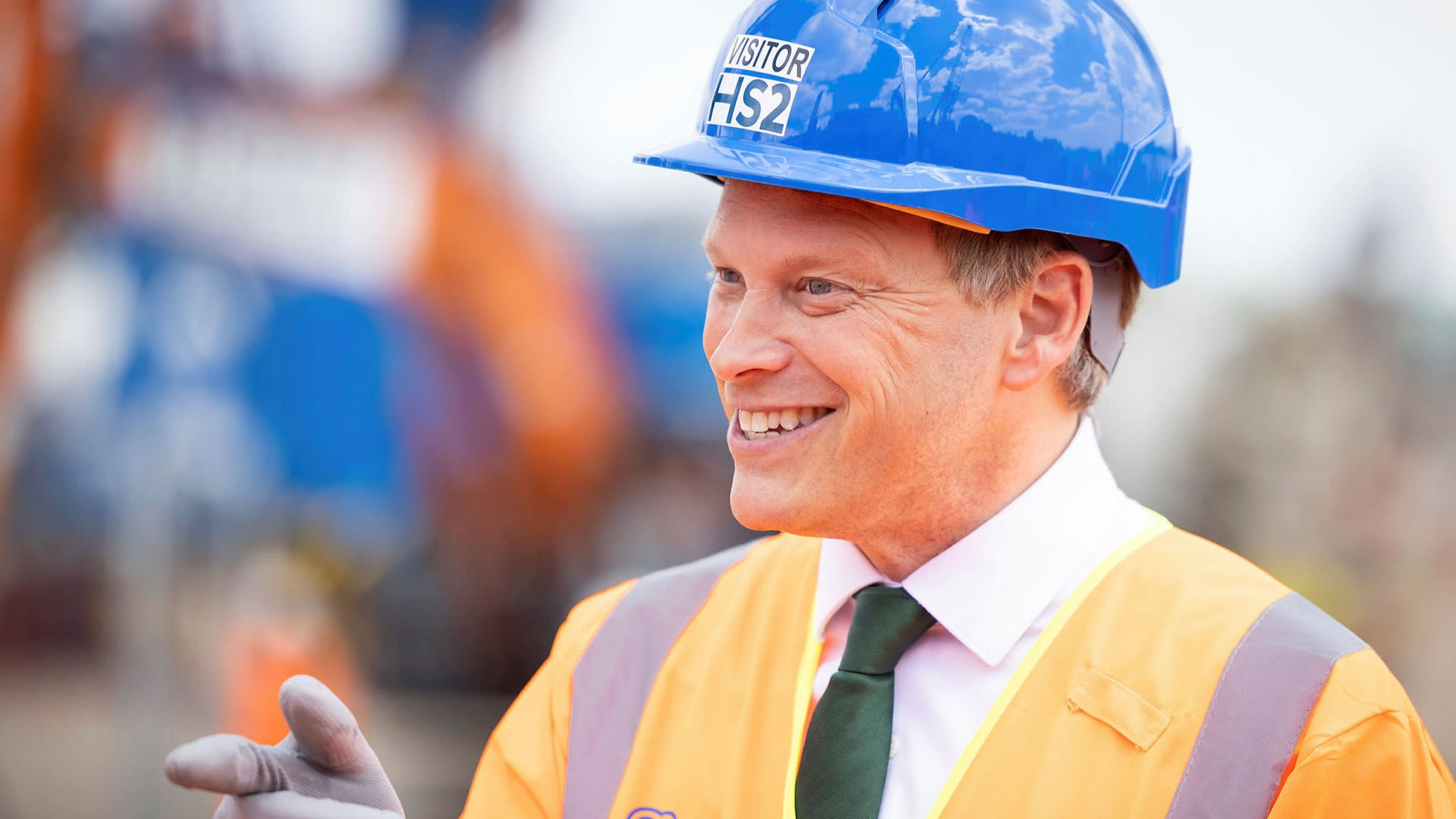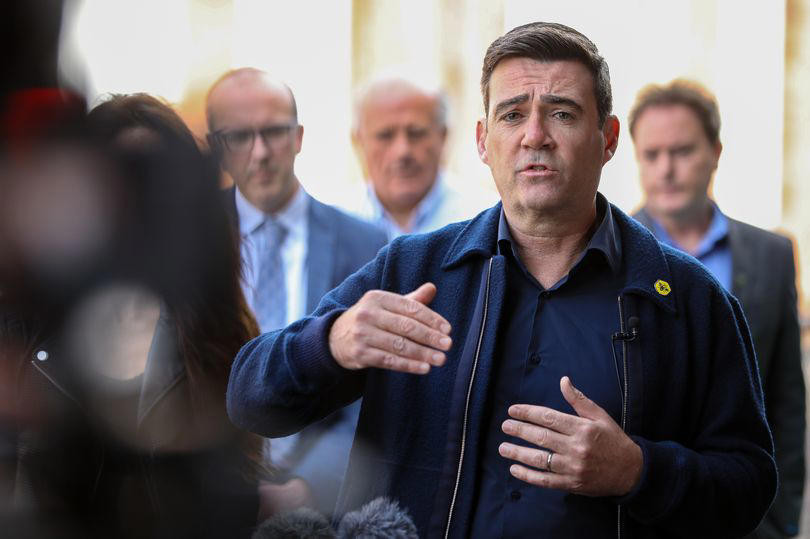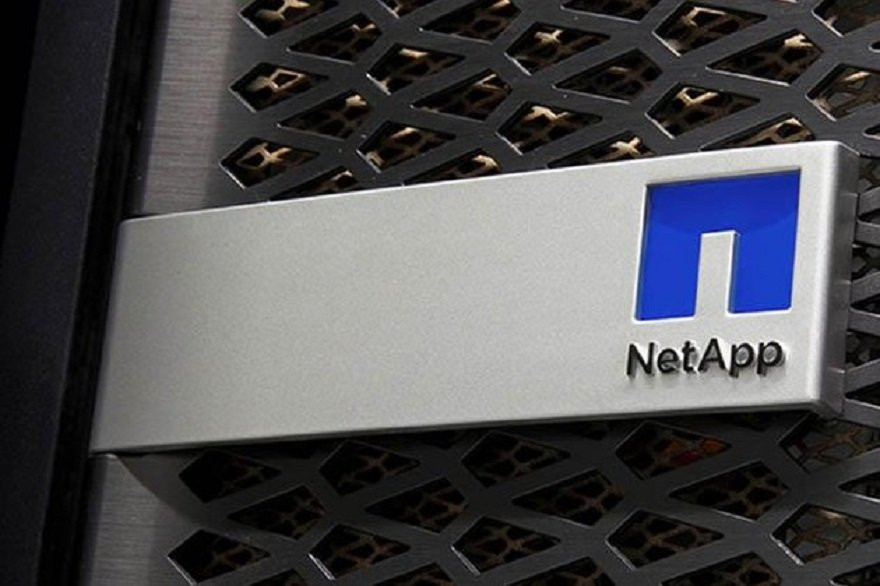A plan for a new high-speed rail line linking Birmingham and Manchester has been unveiled, claiming to deliver most of the benefits of the scrapped northern leg of HS2 at significantly cheaper cost and with only slightly longer journey times. The 50-mile track would run from where the HS2 line is now due to end in Staffordshire to join a planned Northern Powerhouse Rail line west of Manchester airport, under a plan unveiled by the mayors of Greater Manchester and the West Midlands.
The proposed line would cost 25%-40% less than HS2’s scrapped second phase, and could be partly funded by the private sector, according to a report commissioned for the mayors. HS2’s northern leg was controversially abandoned by Rishi Sunak in autumn 2023, and although Labour said it would not reinstate it, a series of damning reports have criticised the decision as undermining the benefits of the whole high-speed rail project.
The mayor of Greater Manchester, Andy Burnham, said the report showed that “doing nothing was not an option”, with growing traffic and the bottlenecks on the west coast mainline meaning demand would outstrip train capacity on the existing railway in the north. The report, which was conducted by an Arup-led private sector consortium chaired by former HS2 boss Sir David Higgins, said it had examined options from upgrades and bypasses to the west coast line but concluded: “The best path forward is a new rail line … and the only one suitable attracting private finance.”
Trains would take about 15 minutes longer to reach Manchester from London than under the original HS2 plan, but still at least 30 minutes less than current services, which take over two hours. The report said the plan would also potentially save the Treasury about £2bn in costs that HS2 Ltd had linked to Sunak’s decision, by using much of the same purchased and safeguarded land, along with legislative time and design work.
The line, rebranded as a “Midlands-North West rail link”, would largely follow the same route and be built in two phases north and south of Crewe that mirror the jettisoned HS2 schedule. However, it could cut the budget needed by building a less future-proof railway, designed to a lower specification, with trains running at a maximum 186 mph (300kph) instead of 225mph and using ballasted track rather than concrete slabs.
The report’s authors declined to give an overall budget figure for the scheme, citing the disputes over the scope and costs of HS2’s second phase – which Sunak claimed would amount to £36bn last year, but would have included parts of new northern lines. The plans have been launched as Labour reviews existing capital spending plans in transport and other departments before the budget on 30 October. Supporters are hopeful that government funding could restart a rail link, after both the National Infrastructure Commission and the National Audit Office warned of the consequences of Sunak’s cancellation.
An infrastructure review by the former Siemens UK boss Jürgen Maier for Labour last month said the cancellation of the HS2 northern leg would potentially “leave the west coast mainline, and in tandem the M6 [motorway], to collapse”. Burnham called for an “early decision to end the uncertainty”, saying that the congested transport links were “becoming major barriers to economic growth in the UK”.
He said the report had “good news for the government … a viable option to build a new rail line between Lichfield and High Legh, connecting HS2 to Northern Powerhouse Rail, with almost all of the benefits of HS2 delivered quickly and crucially at a significantly lower cost”. But, the mayor added: “Doing nothing is not an option as demand for rail services on the west coast mainline is set to exceed capacity within a decade.”
The mayor of the West Midlands, Richard Parker, said: “Without this extension, we will continue to be reliant on the west coast mainline, which is already maxed out and impacting on the people of this region and wider. We need to free up capacity and we need to get this right – for our future and our economy.”
Higgins urged the government to work together with the private sector and mayors to “take the practical steps to make a new rail link a reality”. Sir John Armitt, the chair of the National Infrastructure Commission, said: “Without better rail links between these two regions, economic opportunities will be lost and the full benefits of the first phase of HS2 will not be realised. It is good to see local leaders devising practical options that merit serious consideration by government.”
Cheaper and Faster Alternative
The new rail line could be built in two phases, mirroring the scrapped HS2 schedule. However, the new route could be cheaper because it will be designed for lower speeds and using simplified connections with the existing rail network. The proposal calls for trains to run at a maximum of 186 mph, instead of 225 mph. This could save the government millions of pounds in construction costs. The report, commissioned by the mayors of Greater Manchester and the West Midlands, found that the new line could deliver roughly 85% of the benefits of HS2 Phase 2, at a lower cost. The report argues that the new line could help to create 70,000 jobs and contribute £70bn to the UK economy.
The Case for the New Rail Line
The proposed rail line has received support from a number of high-profile figures, including Sir John Armitt, the chair of the National Infrastructure Commission. He said that without better rail links between the Midlands and the North West, “economic opportunities will be lost and the full benefits of the first phase of HS2 will not be realised”. The report also argues that the new line could help to reduce traffic congestion on the M6 and M1 motorways, which could lead to significant reductions in carbon emissions.
Future of HS2
The government has not yet commented on the new proposal. However, a Department for Transport spokesperson said that the government is “absolutely committed to improving rail connectivity across the north and working with devolved leaders”. The government is currently reviewing the position it has inherited on HS2, and will set out next steps in due course. The future of HS2 remains uncertain, but the new proposal offers a viable alternative that could help to deliver much-needed improvements to rail connectivity in the north of England.
A Step in the Right Direction
The proposed rail line is a welcome step in the right direction. It offers a cost-effective way to improve rail connectivity between the Midlands and the North West. The government should give the proposal serious consideration and work with local leaders to make it a reality. The new rail line would be a major boost to the UK economy and help to level up the country. It would also help to reduce carbon emissions and improve air quality.


















